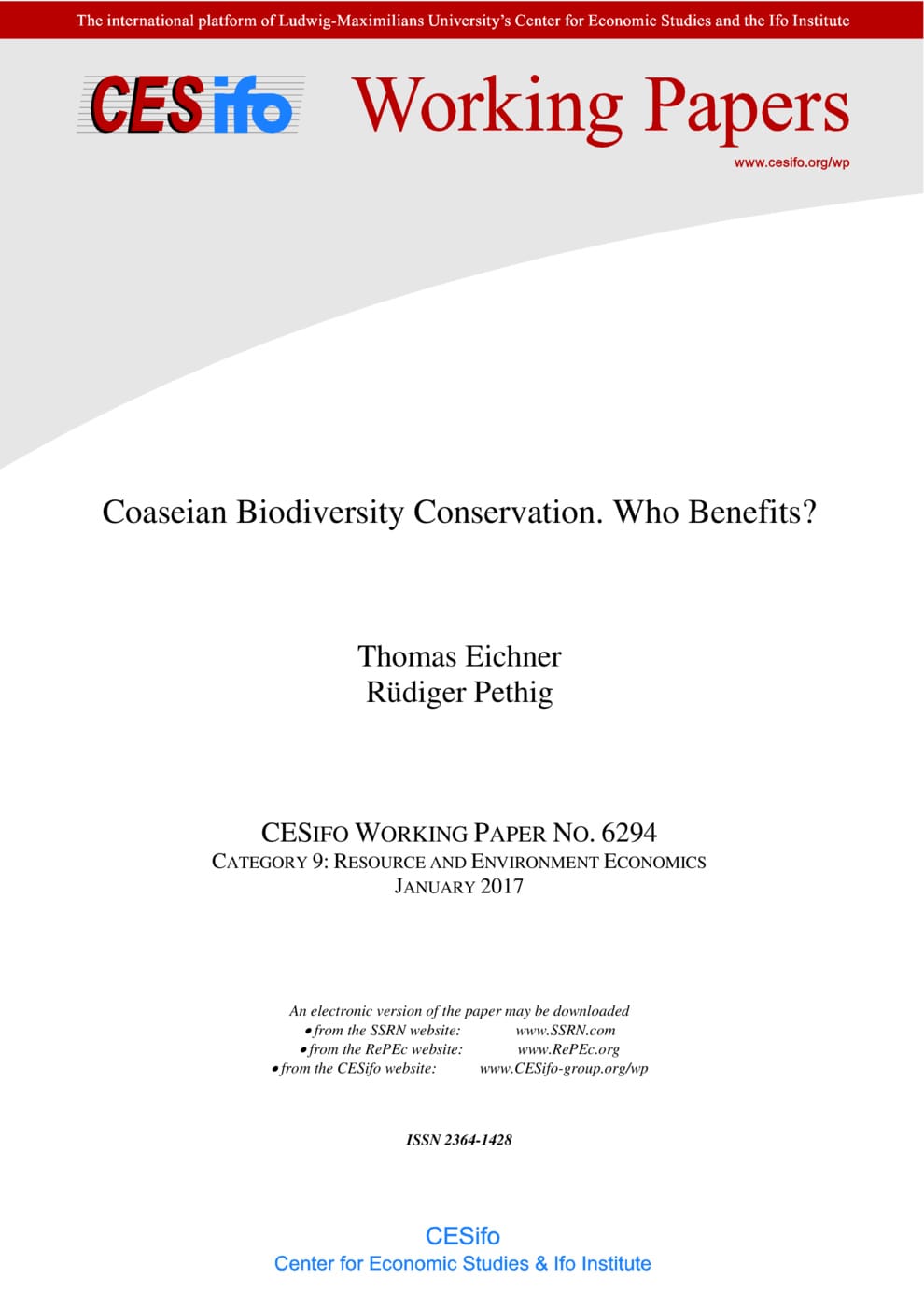Coaseian Biodiversity Conservation. Who Benefits?
CESifo, Munich, 2017
CESifo Working Paper No. 6294

We consider a world economy, in which the global public good ’biodiversity’ is positively correlated with that share of land which is protected by land-use restrictions against the deterioration of habitats and ecosystems. The willingness-to-pay for biodiversity conservation is positive in ’rich’ developed countries (North), but very low in ’poor’ developing countries (South). Taking the no-policy scenario (Regime 1) as our point of departure, we analyze the changes in allocations and welfare when the North financially supports biodiversity conservation in the South – as stipulated in the Convention on Biological Diversity (1992). We model that support as a market for biodiversity conservation and distinguish the cases, in which the North does (Regime 3) or does not (Regime 2) coordinate its biodiversity conservation actions. Our numerical examples exhibit various unexpected and even undesirable results. The move from Regime 1 to Regime 2 hardly improves welfare and biodiversity in our examples irrespective of whether governments act strategically. That may explain the low level of North’s financial support of biodiversity in the South we observe in practice. Without strategic action, the move from Regime 1 to 3 enhances aggregate welfare, because Regime 3 is efficient, but the North or the South may be worse off due to unfavorable changes in their terms-of-trade. If governments act strategically, the aggregate welfare may decline when moving from Regime 1 to 3, but the welfare changes with opposite signs for North and South tend to be smaller than without strategic action.
Resources and Environment
Energy and Climate Economics